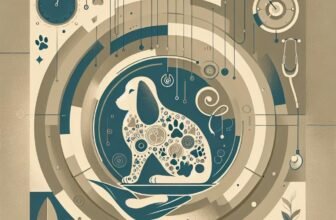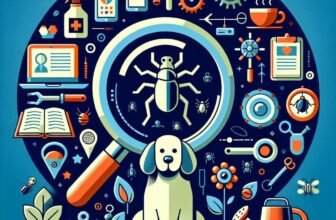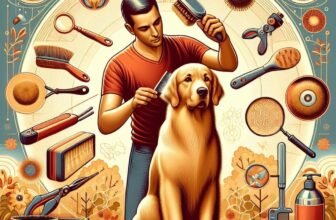
Check out our latest products
When it comes to pet ownership, regular grooming is a vital aspect of maintaining your furry friend’s health and happiness. While professional groomers offer invaluable services, it’s equally crucial to keep your pet looking and feeling their best between visits. Whether you have a long-haired dog that needs regular brushing or a cat whose coat benefits from occasional maintenance, a little at-home care can go a long way. in this article, we’ll explore essential tips and techniques to help you effectively groom your pet at home, ensuring they stay agreeable and clean until their next appointment. From brushing basics to bathing best practices, these simple steps will empower you to contribute to your pet’s grooming routine—with love and care.
Table of Contents
- Understanding Your Pets Grooming Needs
- Choosing the Right Tools for At-Home Grooming
- Establishing a regular Grooming Routine
- Identifying Common Grooming Issues and Solutions
- The Way Forward
Understanding Your Pets Grooming Needs
Every pet has unique grooming requirements that can affect their overall well-being and happiness. Understanding your furry friend’s breed, fur type, and individual needs is crucial for maintaining their coat and skin health. As an example, long-haired breeds may require daily brushing to prevent mats and tangles, while short-haired pets might benefit from weekly grooming sessions to remove loose fur. Observing your pet’s coat condition regularly will help you determine the frequency and type of grooming tasks needed.Additionally,paying attention to your pet’s behavior during grooming can provide insights into their comfort levels and preferences.
incorporating grooming into your pet’s routine can be both beneficial and enjoyable. Hear are a few grooming tasks you can manage at home:
- Brushing: Helps prevent matting and reduces shedding.
- Bathing: Keep your pet clean and odor-free without overdoing it—once a month is typically sufficient.
- Nail trimming: Important for comfort and health; should be done every couple of weeks.
- Ear cleaning: Helps prevent infections, especially in breeds prone to ear issues.
To further simplify the grooming process, consider the following chart highlighting common breed grooming needs:
| Breed | Grooming Frequency | Specific Needs |
|---|---|---|
| Labrador Retriever | weekly | Short coat, moderate shedding |
| Poodle | Every 4-6 weeks | Needs regular clipping |
| Shih Tzu | Daily | Long hair, prone to mats |
| Beagle | Weekly | Short hair, occasional ear cleaning |
Choosing the Right Tools for At-Home Grooming
when it comes to ensuring your pet looks and feels their best between professional grooming sessions, investing in the right tools can make all the difference.Consider your pet’s specific needs, such as their coat type and any particular grooming challenges they may have. As a notable example,a long-haired breed will require different brushes than a short-haired one. Essential grooming tools might include:
- Slicker Brush: Ideal for removing loose hair and preventing mats.
- Combs: Great for detangling and smoothing coats.
- Clippers: Perfect for maintaining fur length and edges.
- Nail Clippers: Essential for keeping your pet’s nails trimmed and healthy.
- Bathing Supplies: Pet-specific shampoos and conditioners to maintain coat health.
Beyond individual tools, consider how these items fit together in a cohesive grooming routine. A convenient storage solution can help keep everything organized and easily accessible. Setting up a designated grooming station in your home with a grooming table, appropriate lighting, and a comfortable spot for your pet can create a positive experiance. Here’s a simple table outlining some must-have tools and their primary functions:
| Grooming Tool | Primary Function |
|---|---|
| Slicker Brush | Removes loose fur & prevents mats |
| Fur Comb | Detangles fur & smooths coat |
| Nail Clippers | Trims and maintains healthy nails |
| Deshedding Tool | Reduces shedding & keeps home cleaner |
Establishing a Regular Grooming Routine
Creating a strong grooming routine for your pet is essential for their overall health and well-being. Regular grooming helps to remove loose hair, dirt, and debris, while also allowing you to check for any potential skin issues or parasites.Start by setting a schedule that works for both you and your pet. Daily,weekly,or monthly sessions will depend on your pet’s breed,coat type,and personal preferences. Consider including the following elements in your routine:
- Brushing: determine the frequency based on your pet’s fur type—long-haired breeds may require daily brushing, while short-haired ones may need it only once a week.
- bathing: Plan on a bath every 4 to 6 weeks, but adjust based on their activity level and exposure to dirt.
- Nail Trimming: Trim your pet’s nails monthly to prevent discomfort and health issues.
- Ear Cleaning: check ears weekly for dirt or wax build-up, cleaning them as needed.
to keep the grooming process smooth and enjoyable, it’s crucial to familiarize your pet with the tools you will use. Try to make the experience positive by rewarding them with treats and praise after each grooming session. This will create a sense of comfort and anticipation rather than fear. If you intend to incorporate specialized grooming tools, here’s a rapid reference table to guide you:
| Tool Type | Purpose |
|---|---|
| Brush | detangling and removing loose hair |
| Comb | Smoothing out the coat and checking for pests |
| Nail Clippers | Maintaining nail health and length |
| Shampoo | Cleansing to keep the coat shiny and healthy |
Identifying Common Grooming Issues and Solutions
Pet grooming is essential for maintaining the health and appearance of your furry friend, but certain common grooming issues can make this task a challenge. One frequent problem is matting, especially in long-haired breeds. If left untreated, mats can be painful and cause skin irritations.To combat this, consider the following solutions:
- Regular Brushing: Establish a consistent brushing routine to prevent mats from forming.
- Detangling sprays: Use pet-safe detangling sprays to ease out knots.
- Professional Grooming: Schedule regular professional grooming sessions for a thorough clean-up.
Another common issue is nail trimming. Overgrown nails can lead to discomfort and even mobility problems for pets. To ensure your pet’s nails are kept at a safe length, consider these tips:
- Frequent Checks: Regularly check your pet’s nails to identify when they need trimming.
- Proper Tools: Invest in good-quality nail clippers designed for your pet’s size.
- Reward System: Use treats and positive reinforcement to make nail trimming a pleasant experience.
The Way Forward
maintaining your pet’s grooming routine between professional visits is essential for their overall health and well-being. By following these essential tips—such as regular brushing, bathing, and nail trimming—you can ensure your furry friend looks and feels their best every day. Remember, a well-groomed pet is not only more comfortable but also less prone to skin issues and discomfort. Embrace these simple practices, and you’ll strengthen the bond with your pet while promoting their happiness and vitality. So, gather your grooming tools and get started on a regular routine that works for you and your companion. Happy grooming!










